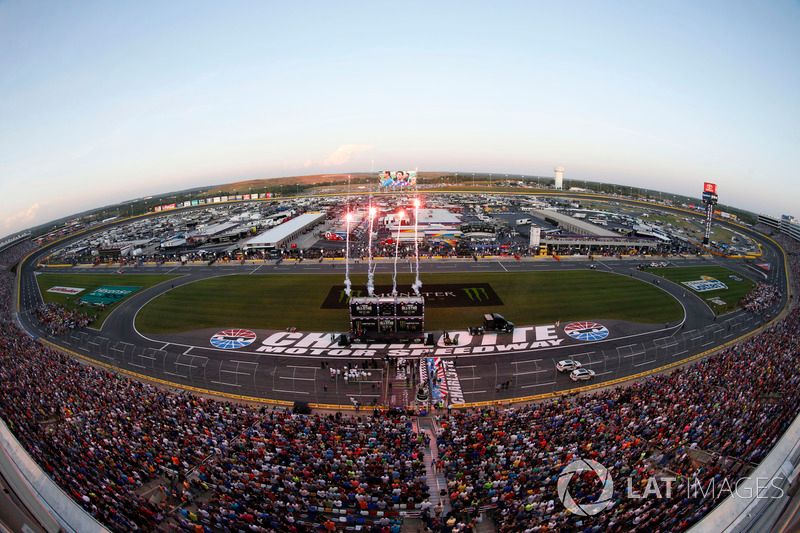The 1992 All-Star Race was an event where everything perfectly came together to create one of the most memorable races in NASCAR history, and it wasn’t even an event that counted towards the season-long championship.
To understand the race’s significance, we have to go back before the green flag even flew. The NASCAR All-Star Race began in 1985 as ‘The Winston.’ It was a definitive success, but after a few years, the newness wore off and there were questions about whether or not the event would continue in 1992.
Under the lights for the very first time
This is where legendary promoter Humpy Wheeler comes in. With interest in the race waning, he proposed they run the race at night. That may not sound like a novel concept now, but in 1992, few believed it was possible to properly light up a track the size of Charlotte Motor Speedway for a car race.
It was a challenge Wheeler gladly accepted and despite skepticism from the drivers and a tight window to get it done, he managed it. Labeled ‘One Hot Night,’ it promised to be a must-see event for all NASCAR fans.
The intrigue was there and well over 100,000 people packed the 1.5-mile track to see this nighttime spectacle. Oh, and a Full Moon overhead only added to the already electric atmosphere.
Now all they needed to do was to put on a thrilling show to match the hype. Well, there’s a reason I’m writing about this exhibition race 32 years later.
Charlotte Motor Speedway
Photo by: Matthew T. Thacker / NKP / Motorsport Images
Davey Allison led the field of 20 the initial green flag. After just three laps of racing, several drivers were collected in a backstretch pileup. Dale Jarrett, Hut Stricklin and Morgan Shepherd were all eliminated from the race.
But up front, Allison was firmly in control. The second-generation racer led the entirety of the first segment, but the fans had a say in the way this race as well. The voted to invert the field, putting the No. 28 Yates Racing Ford to the rear. About 64% of fans called for the invert.
There were also some payouts for the top runners with Allison earning $50,000 for dominating the first segment. Bill Elliott was running second and earned $15,000, and Rusty Wallace in third got $7,500.
Now they had a lot of work to do, and 40 laps to go. They were helped by the inclusion of double file restarts, which is now a staple of NASCAR racing.
Geoff Bodine inherited the race lead with ‘The King’ Richard Petty, who was 53 years…
Click Here to Read the Full Original Article at Motorsport.com – NASCAR – Stories…

